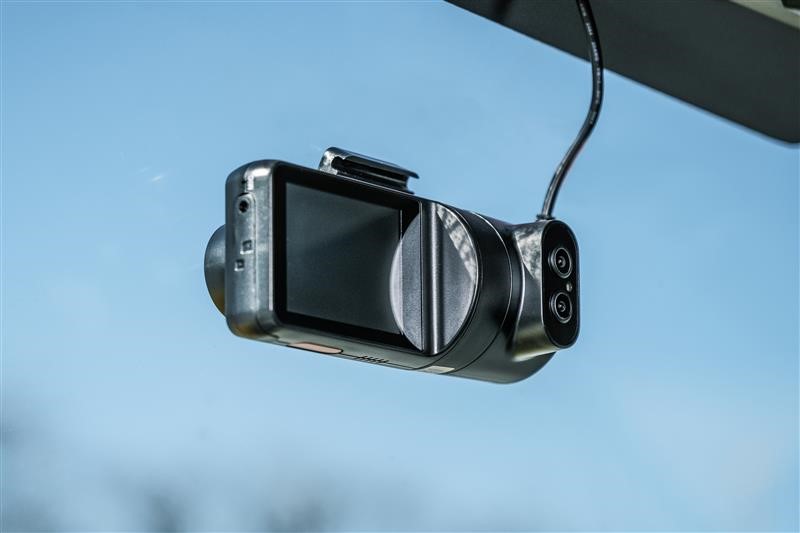Manitoba crash makes case for video-based telematics systems
Highway crashes don’t discriminate. They take the aging and the young, all before their time. Grieving families and investigators alike are simply left sifting through what remains, trying to make sense of it all.
Wreckage on a Manitoba highway offers the latest example of that.
A minibus full of senior citizens was on a day trip to the Sand Hills Casino when it crossed into the path of an eastbound tractor-trailer on the Trans-Canada Highway, just west of Winnipeg and north of Carberry. Witnesses told stories of first responders pulling people from the wreckage, caring for those with orthopedic and head injuries.
In the end, 15 were dead. Ten were sent to hospital. One of the latter has since succumbed to her wounds.

It evokes memories of a 2018 crash – on another prairie highway, involving another bus, and other grieving families. When the tractor-trailer in that collision ran through a stop sign at a rural Saskatchewan intersection, it collided with the bus carrying the Humboldt Broncos junior hockey team. Sixteen were killed and 13 injured there.
One key distinction has already emerged in the Manitoba crash, though. Investigators were quickly able to determine that the Day & Ross truck driver had the right of way. We know that because the fleet had invested in a video-equipped telematics system.
Video footage offers clarity
It doesn’t change the outcome, of course. But the footage offers some clarity as further details are studied and measured, as crash investigators explore factors such as speeds and vehicle condition.
Like the Humboldt Broncos crash that went before it, the trucking industry has an opportunity to draw broader lessons from the tragedy.
The early evidence available in the Manitoba crash reinforces the value of dashcam footage to offer clear insights into the moments leading up to a collision. Time and again, such technology has provided the valuable evidence needed to separate facts from the oft-unreliable accounts of passing motorists or drivers themselves.
Those who oppose such systems tend to cite privacy concerns and make comparisons to the unblinking eye of Big Brother in George Orwell’s 1984. But such systems only record their images when things are going wrong, when drivers would benefit from the accounts of an electronic co-driver. When leveraging artificial intelligence, driver-facing cameras can even identify situations as diverse as distracted driving and seatbelt use.
Should such systems be mandated? I’m not convinced of that. They don’t actually prevent imminent crashes. Nor do they minimize the extent of any damage that does occur. But they offer insights when things go wrong, and offer the teachable moments that fleets can use to break bad habits and refine driver techniques.
It offers a clear business case that fleets would be wise to consider.
A case for AEB?
Time will tell what other lessons can be drawn from this collision. For example, would automatic emergency braking (AEB) have any hope of avoiding such a crash, or at least mitigate its severity? Answers to questions like this can emerge over the course of an investigation.
But in the U.S., regulators are now looking to mandate AEB on heavy trucks, which are the striking vehicles in 60,000 rear-end crashes a year.
That proposed rule would annually prevent an estimated 19,118 crashes, save 155 lives, and prevent 8,814 injuries, according to government estimates.
Even if such underlying technology wouldn’t have prevented the Manitoba crash, they most certainly would help prevent others. And that’s a worthy goal for everyone involved.
Crashes will continue. But it’s up to all of us to find ways to minimize the losses in any ways we can.
Have your say
This is a moderated forum. Comments will no longer be published unless they are accompanied by a first and last name and a verifiable email address. (Today's Trucking will not publish or share the email address.) Profane language and content deemed to be libelous, racist, or threatening in nature will not be published under any circumstances.
You correctly state that it’s been determined the Day & Ross driver had the right of way based on dashcam footage, forward facing dash cam footage. Driver’s cite privacy concerns based on driver facing cameras not forward facing cameras. Without knowing the outcome of the investigation, it would be impossible to ascertain the argument for driver facing cameras in this instance. Privacy still has to be of paramount concern as we have all seen far too many videos of leaked driver facing footage.
Dash cams are a great tool, but companies that put them in two trucks should be only facing forward not into the cab that invades the drivers privacy. Thank you.